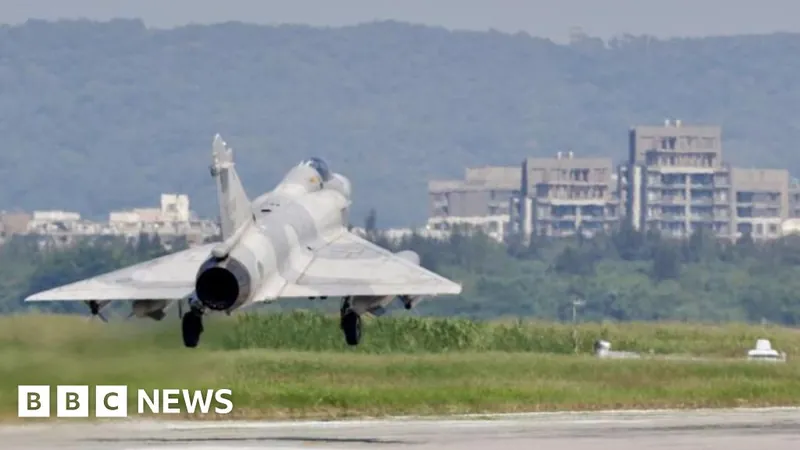
China Escalates Military Tensions with New Drills Around Taiwan Amid Rising Hostility
2024-10-14
Author: Wai
China Escalates Military Tensions with New Drills Around Taiwan Amid Rising Hostility
In a startling show of force, China has commenced military drills off the coast of Taiwan, which it characterizes as a response to President William Lai's defiant pledge to "resist annexation" and protect Taiwan's sovereignty. This aggressive maneuver is seen as a direct retaliation against remarks made by President Lai, who has alarmed Beijing with his unwavering support for Taiwanese independence.
Taiwan's defense ministry reported detecting a significant increase in Chinese military activity, with 34 naval vessels and 125 aircraft converging around the island. Chinese state media illustrated the extensive deployment, highlighting their forces encircling Taiwan, and later confirmed the drills had been concluded successfully.
The People’s Liberation Army (PLA) conducted operations that simulated a multi-faceted assault on Taiwan by land, sea, and air, with Senior Captain Li Xi noting that the exercises thoroughly tested the troops' integrated joint operational capabilities. Despite the intensity of the drills, Taiwan's airports and ports have remained operational.
In response to this military escalation, Taiwan's defense ministry expressed grave concerns, emphasizing their priority to prevent direct confrontations that could escalate tensions further. They have also placed outlying islands on high alert as a precautionary measure.
China’s foreign ministry described these military exercises as crucial for regional stability, explicitly condemning Taiwan’s independence, which it claims is "incompatible" with peace. Notably, in a symbolic gesture, the Chinese coast guard announced that the patrol routes during the drills were shaped like a heart, adding an ironic twist to the ongoing tensions.
This latest round of military exercises, dubbed "Joint Sword 2024-B," is consistent with China's ongoing pattern of increased military presence near Taiwan, particularly since 2022, which has seen intensified air incursions into Taiwanese airspace. This current exercise was anticipated following previous drills of the same name held in May, coinciding with the inauguration of President Lai—a leader characterized by Beijing as a provocateur.
Since the election of the pro-independence Democratic Progressive Party (DPP) and Tsai Ing-wen as president in 2016, relations between Taipei and Beijing have deteriorated sharply. Following heightened tensions, including US House Speaker Nancy Pelosi’s controversial visit to Taiwan in August 2022, which Beijing perceived as a significant provocation, China has responded with military intimidation and assertive posturing.
As military tensions escalate, the U.S. government has voiced its disapproval of China's maneuvers, categorizing them as unjustifiable reactions to President Lai's routine remarks and urging China to steer clear of actions that threaten regional peace and stability.
The backdrop of historical military intimidation from China towards Taiwan began in 1996, when Beijing launched ballistic missile tests following Taiwan's first direct presidential elections. This prompted U.S. President Bill Clinton to deploy naval forces to the Taiwan Strait as a warning against potential aggression. Given the long-standing and complex dynamics at play, the current situation remains precarious, and analysts warn that any miscalculation could swiftly spiral into a more significant conflict.
Stay tuned as we monitor this evolving situation closely—will Taiwan's sovereignty hold against China's growing military might?





 Brasil (PT)
Brasil (PT)
 Canada (EN)
Canada (EN)
 Chile (ES)
Chile (ES)
 España (ES)
España (ES)
 France (FR)
France (FR)
 Hong Kong (EN)
Hong Kong (EN)
 Italia (IT)
Italia (IT)
 日本 (JA)
日本 (JA)
 Magyarország (HU)
Magyarország (HU)
 Norge (NO)
Norge (NO)
 Polska (PL)
Polska (PL)
 Schweiz (DE)
Schweiz (DE)
 Singapore (EN)
Singapore (EN)
 Sverige (SV)
Sverige (SV)
 Suomi (FI)
Suomi (FI)
 Türkiye (TR)
Türkiye (TR)